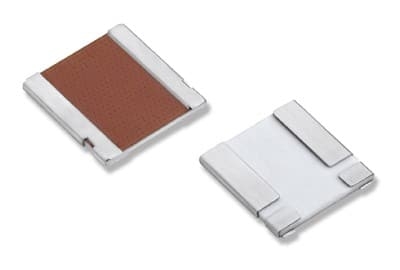source: Pace Today News
Vishay Precision Group’s Model 303337 ultra-high precision military and space-grade resistor, offering high-performance current sensing within mission-critical applications.
It produces a precise voltage that is directly proportional to measured current levels, with reduced component sensitivity to applied power changes, including PCR and thermal resistance values.
The design of the Model 303337 incorporates VPG’s proprietary Bulk Metal Z Foil resistive technology, along with a four-terminal Kelvin connection, for ultra-high precision current sensing and temperature stability to 3W.
Additional attributes include a low temperature coefficient of resistance (TCR) of ±5 ppm/°C (–55°C to +125°C, at +25°C ref.), for reduced risk of measurement errors due to temperature changes; improved load-life stability of ±0.02 per cent (typ.), at +70°C for 2000 hours (rated power); a low power coefficient of resistance (PCR) of 5 ppm/W at rated power; a resistance tolerance to ±0.1 per cent; a 100 to 200 mΩ resistance range; a short-time overload of 0.005 per cent typical; an electrostatic discharge (ESD) limit of <25 kV; solderable terminations; and a choice of either lead (Pb)-free or tin/lead alloy solder finish.
To ensure resistor reliability and conformance to published specifications, each unit undergoes stringent testing across its full batch lot. A Quality Conformance Inspection report accompanies each shipment, detailing all test data collected during Environmental Test Laboratory studies. The report offers design engineers a reliable set of data for the anticipation of actual resistor performance within an intended installation environment.
Data includes screen/test flow per EEE- INST-002 (Tables 2A and 3A, Film/Foil, Level 1), MIL-PRF-55342 and MIL-PRF-49465, among other parameters. For customer convenience, prototype quantities of the Model 303337 resistor are also available with expedited deliveries.
The Model 303337 ultra-high precision surface mount resistor may be specified within demanding and mission-critical military, aerospace, defense and space applications, including those where a precision resistor is required to quickly reach thermal equilibrium, within circuits that either require fast response times, or which are characterised by rapid current changes.
































